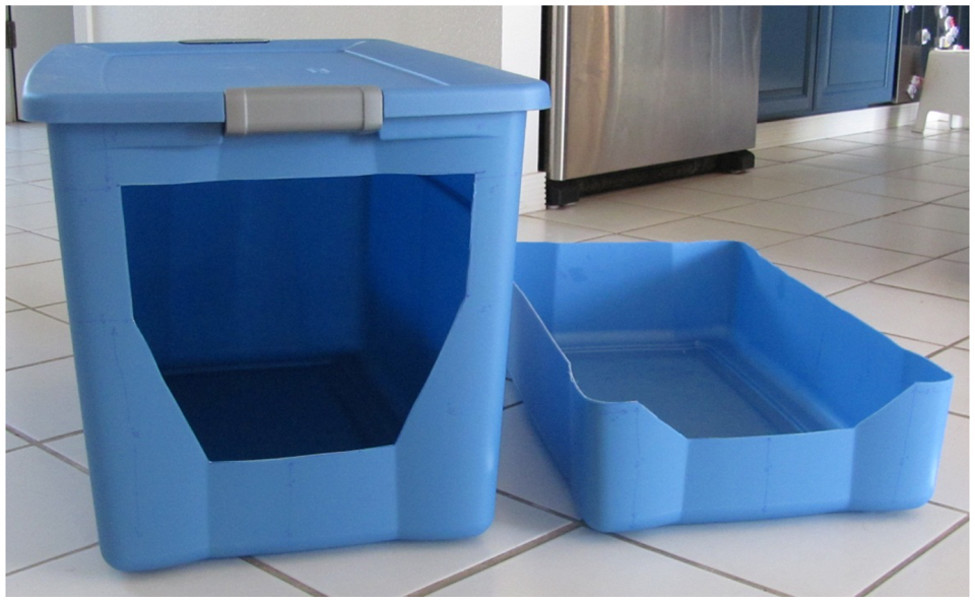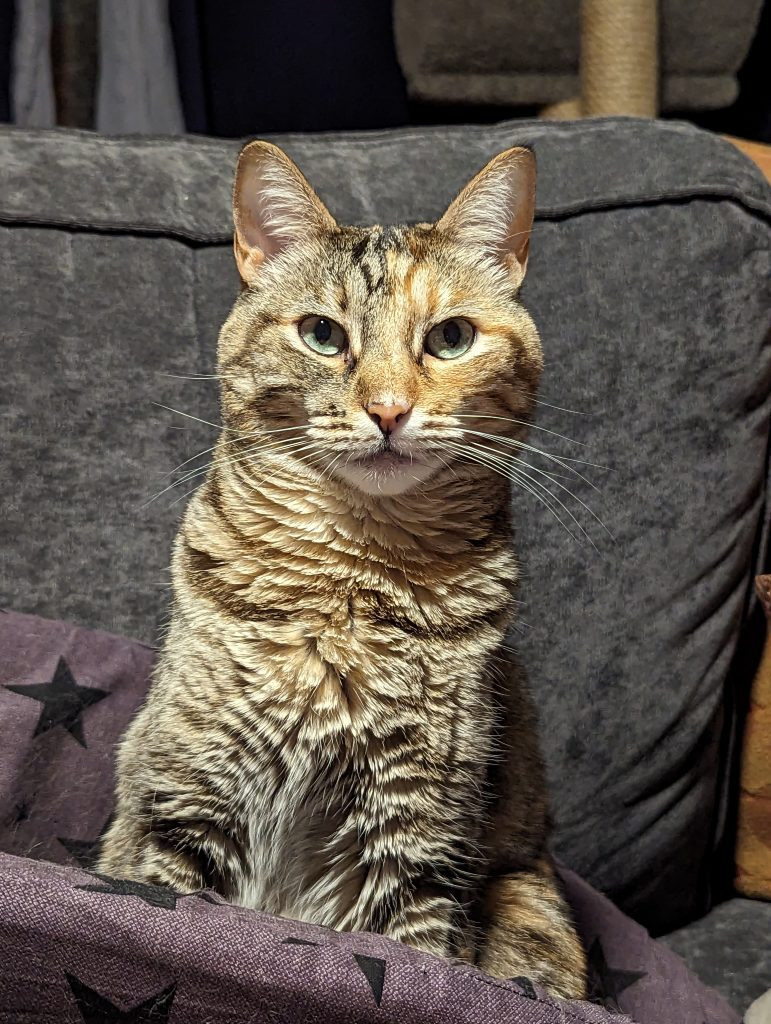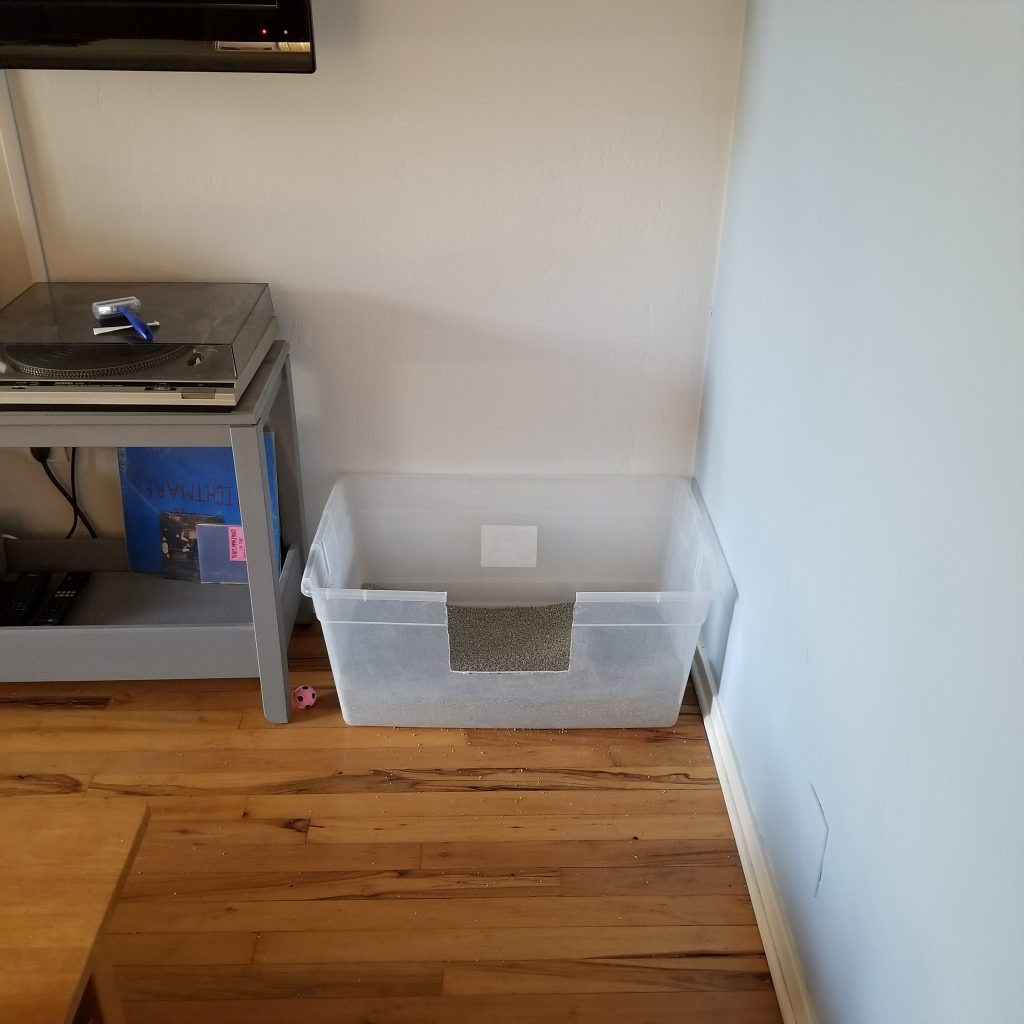Understanding your cat’s preferences is key to their health and happiness, and the litter box is no exception. Many cat owners find themselves pondering the best type of litter box, particularly when faced with behavioral issues like litter box avoidance. A common question revolves around covered versus uncovered litter boxes. While conventional wisdom might suggest cats dislike hooded boxes, a notable 2013 study challenges this notion, indicating that under controlled conditions, cats show no strong preference.
As a cat behavior consultant, I often encounter misconceptions about feline litter box habits. The aforementioned study, conducted by Dr. Emma Grigg, a respected colleague, provides valuable insights. However, it’s crucial to delve deeper into such research, understanding its nuances and considering it alongside other findings and practical experience. This article will explore the details of this study, discuss why relying solely on one study can be misleading, and offer comprehensive guidance on selecting the ideal litter box setup for your feline companion. We aim to provide you with expert knowledge to make informed decisions about litter boxes for cats, ensuring a comfortable and stress-free experience for both you and your pet.
Decoding the 2013 Litter Box Study: Methods and Findings
Dr. Grigg’s 2013 study, titled “Litter box preference in domestic cats: covered versus uncovered,” investigated the litter box preferences of 27 healthy indoor cats without pre-existing litter box issues. The study aimed to determine if cats truly favor uncovered litter boxes over covered ones. For two weeks, each cat was presented with two litter box options: one covered and one uncovered. These weren’t your typical store-bought litter boxes; researchers utilized large storage bins to ensure ample size. The covered box had a lid with an entrance cut out, while the uncovered box had trimmed-down sides (approximately 6 inches high) and a lower entryway. Cats from multi-cat households were temporarily separated to eliminate external influences during the experiment. Both boxes were placed side-by-side and filled with the same clumping clay litter.
 Two large storage bin litter boxes, one covered with a cut entrance and one uncovered with low sides, placed side by side in a room
Two large storage bin litter boxes, one covered with a cut entrance and one uncovered with low sides, placed side by side in a room
Alt text: Experimental setup for litter box preference study showing a covered and uncovered litter box made from large storage bins.
Owners were instructed to scoop waste daily, collecting it in bags for daily weighing. Researchers then compared the weight of waste in each type of box (covered vs. uncovered) to assess preference, both across the entire group of cats and individually. It’s important to note that individual urine clumps weren’t counted due to their fragility.
The study’s results indicated that, as a group, the cats did not exhibit a statistically significant preference for either covered or uncovered litter boxes. Waste amounts were comparable between both types. Further analysis revealed that 19 out of the 27 cats used both litter boxes seemingly equally. This led to the conclusion that, under these specific study conditions, most cats didn’t show a strong aversion to covered litter boxes. However, before concluding that covered litter boxes are universally acceptable, it’s essential to consider several crucial caveats.
Caveats to Consider: Beyond the Headlines of Litter Box Preference
While the 2013 study provides valuable data, it’s vital to interpret its findings within a broader context. Several caveats warrant consideration before changing your litter box strategy based solely on this study.
Individual Cat Preferences Matter
Even though the overall study population showed no strong preference, a closer look reveals individual variations. Eight cats in the study did exhibit a distinct preference: four favored covered boxes, and four favored uncovered ones.
 A tabby cat using an uncovered litter box in a home setting.
A tabby cat using an uncovered litter box in a home setting.
Alt text: Individual cat demonstrating preference for an uncovered litter box in a home environment.
This highlights a fundamental principle in feline behavior: individuality. Scientific studies often analyze group trends, but individual cats have unique preferences. While the study suggests a general trend, it doesn’t negate the fact that some cats strongly prefer one type of litter box over the other. The best way to determine your cat’s preference is to offer a choice and observe their behavior.
The Size Factor: Are Standard Covered Litter Boxes Big Enough?
The litter boxes used in the 2013 study were constructed from large storage bins, measuring a generous 32.5 inches long, 19.75 inches wide, and almost 19 inches high. This is significantly larger than many commercially available covered litter boxes marketed for cats. For comparison, a popular “large” covered litter box often measures around 19.5 x 15.25 x 17 inches – roughly half the size of the study boxes. While the researchers rightly controlled for size consistency within the study, the sheer size of the boxes might have influenced the results. Cats might be indifferent to a cover when the box is exceptionally spacious but react differently to smaller, confined covered boxes. Supporting this, a 2014 study indicated that cats generally prefer larger litter boxes.
It’s also worth noting that the 2013 study data hinted at larger cats (over 13 lbs) showing a trend towards preferring uncovered boxes. This could be related to space and maneuverability within the litter box.
The Impact of Multi-Cat Households
Cats in the 2013 study were either single cats or separated from other household cats during the experimental period. In multi-cat environments, covered litter boxes can pose social challenges. Many cat behaviorists, myself included, advise against covered boxes because they limit a cat’s visibility of their surroundings, including other cats. A cat using a covered litter box might feel vulnerable, unable to see approaching cats, potentially leading to stress and litter box avoidance, especially in households with feline social dynamics. Under real-world, multi-cat household conditions, cats might exhibit a stronger preference for uncovered boxes for security and environmental awareness.
Litter Box Hygiene: Scooping Frequency is Key
Participants in the 2013 study diligently scooped litter boxes daily. This consistent hygiene likely contributed to the boxes’ appeal to the cats, regardless of whether they were covered or uncovered. However, real-world litter box maintenance habits can differ significantly. Research suggests that covered litter boxes are often cleaned less frequently, sometimes as infrequently as once every five days. The “out of sight, out of mind” aspect of covered boxes might lead to less diligent scooping. A more recent study of cat owners in Italy linked infrequent litter box scooping to house soiling issues in cats. Therefore, while cats might tolerate covered boxes under pristine, daily-scooped conditions, the practical reality of less frequent cleaning associated with covered boxes could negatively impact their litter box usage.
Key Takeaways: Practical Litter Box Wisdom
The 2013 study provides valuable information, but it’s essential to synthesize it with other research and practical experience. Here are the key takeaways for cat owners:
- Size Matters: Cats generally prefer larger litter boxes. Ensure your chosen litter box, whether covered or uncovered, is generously sized to allow comfortable movement.
- Cleanliness is Paramount: Regular scooping is crucial. Aim for at least daily scooping, ideally twice a day, regardless of the litter box type.
- Individual Preference Exists: While many cats may not have a strong aversion to covered boxes under ideal conditions, individual preferences vary. Observe your cat’s behavior and provide options if needed.
- Covered Boxes Can Create Issues: Covered boxes can be too small, hinder visibility in multi-cat homes, and may be associated with less frequent cleaning in practice.
In conclusion, while the 2013 study suggests cats might not inherently dislike covered litter boxes when large and meticulously maintained, these conditions are often not met in typical home environments. Therefore, when considering litter boxes for cats, prioritizing size, cleanliness, and individual preferences remains paramount. Relying solely on the headline of one study without considering the nuances and broader context can be misleading.
Ten Expert Tips for Litter Box Excellence
To ensure your cat uses their litter box consistently and comfortably, follow these ten expert tips:
- Number of Boxes: Provide at least as many litter boxes as you have cats, plus one extra.
- Go Big and Open: Opt for large, uncovered litter boxes to maximize space and visibility.
- Easy Entry: Choose boxes with low sides for easy access, especially for older cats or those with mobility issues.
- Unscented Clumping Litter: Use unscented, soft, clumping clay litter, which is generally preferred by cats.
- Ditch the Liners: Avoid plastic litter box liners, as cats can find them unpleasant.
- Scoop Regularly: Scoop litter boxes at least once, ideally twice, daily to maintain cleanliness.
- Strategic Placement: Place litter boxes in quiet, accessible locations that offer a good vantage point for the cat.
- Separate Locations: Distribute litter boxes in different areas of your home, rather than clustering them together.
- Distance from Resources: Position litter boxes away from feeding, water, and sleeping areas.
- Avoid Automated and Top-Entry Boxes: Steer clear of robot/automatic litter boxes and top-entry litter boxes, as they can be intimidating or inconvenient for cats.
 A large, uncovered storage bin litter box in a home setting, showcasing ample space.
A large, uncovered storage bin litter box in a home setting, showcasing ample space.
Alt text: Example of a large, uncovered storage bin litter box recommended for optimal cat comfort and hygiene.
By implementing these expert tips, you can create a litter box environment that caters to your cat’s needs and preferences, promoting good hygiene and preventing litter box aversion issues.
References
Grigg, E. K., Pick, L., & Nibblett, B. (2013). Litter box preference in domestic cats: covered versus uncovered. Journal of Feline Medicine and Surgery, 15(4), 280-284.
Guy, N. C., Hopson, M., & Vanderstichel, R. (2014). Litterbox size preference in domestic cats (Felis catus). Journal of Veterinary Behavior, 9(2), 78-82.
Horwitz, D. F. (1997). Behavioral and environmental factors associated with elimination behavior problems in cats: a retrospective study. Applied Animal Behaviour Science, 52(1-2), 129-137.
Padalino, B., Zappaterra, M., Felici, M., Ricci-Bonot, C., Nanni Costa, L., Houpt, K., & Tateo, A. (2023). Factors associated with house-soiling in Italian cats. Journal of Feline Medicine and Surgery, 25(11), 1098612X231202482.


